Standards are standards, and NVIDIA is no exception
Now let’s look at the load of the motherboard slot, which is specified by the PCI SIG with 5.5 Amps. This results in a maximum power of 66 watts at 12 volts. It can be assumed that NVIDIA has made a mistake with the balancing, because the load on the PEG increases by almost 14 percentage points compared to the GeForce RTX 3080 without Ti, which is almost exactly the value that could be attributed to the newly added phase, because it is obviously also fed from the PEG.
I criticized AMD for this at the time and will do so here as well. Even if it is only 3.6 percentage points higher in the stress test or when rendering with constant load without OC (AMD was even higher at that time), standards are there to be met! Nothing should be glossed over or swept under the rug there, even though nothing will certainly burn immediately. Such standards are not adopted without reason, because they also create the necessary security for all parties involved (motherboard manufacturers, suppliers, etc.).
Transients and power supply recommendation
As I have already demonstrated in detail in my basic article “The battle of graphics card versus power supply – power consumption and load peaks demystified”, higher loads in the millisecond range do exist for short periods of time, which can already lead to inexplicable shutdowns in the case of poorly designed or improperly equipped power supplies. The TBP (Typical Board Power) measured by the graphics card manufacturer or the reviewers is not really helpful for a stable system design.
Peaks with intervals between 1 and 10 ms can lead to shutdowns in very fast reacting protection circuits (OPP, OCP), especially in multi-rail power supplies, although the average power consumption is still within the norm. For this card, I would therefore calculate 450 to 500 watts as the power limit for the graphics card load proportionate to the total system power consumption on the secondary side, even without OC, in order to have sufficient reserves for the worst case scenario. A short excerpt with higher resolution now shows us the 20-ms measurements (10 μS intervals), as I run them automatically to determine the value:
- 1 - Introduction, Unboxing and Test System
- 2 - Teardown, PCB Analysis and Cooling System
- 3 - Performance: WQHD and Full-HD plus DXR
- 4 - Performance: Ultra-HD with and without DLSS / DXR
- 5 - FPS, Percentiles, Frame Time & Variances
- 6 - Frame Times vs. Power Draw
- 7 - Power Consumption: GPU and CPU in all Games
- 8 - Power Consumption: Effiziency in Detail
- 9 - Power Consumption: Overview, Summary and measured Details
- 10 - Standards (PCI SIG), Transients and PSU Recommendation
- 11 - Temperatures, Boost Clock Rate and Thermal Imaging
- 12 - Fan Speed, Noise and Audio-Sample
- 13 - Summary and Conclusion















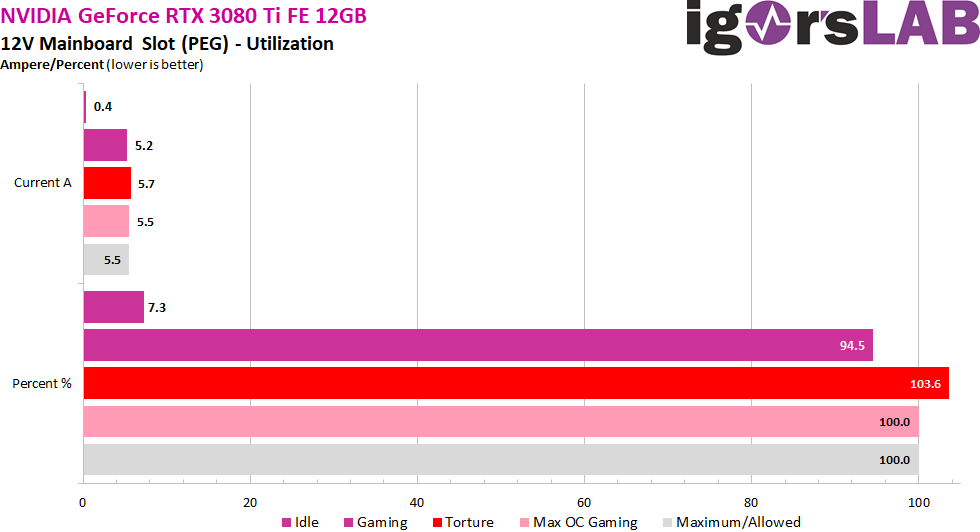
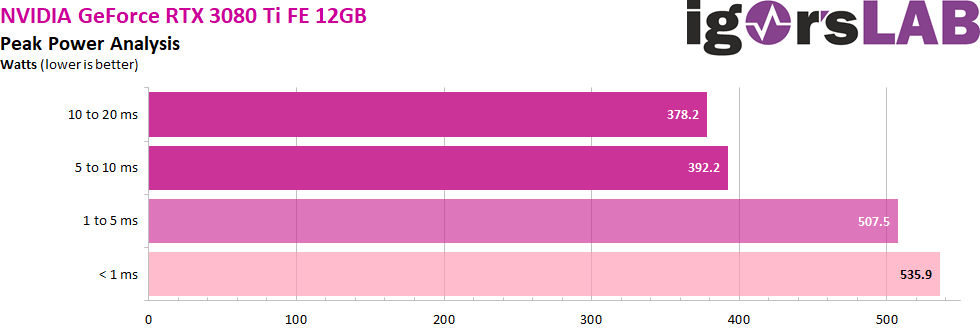
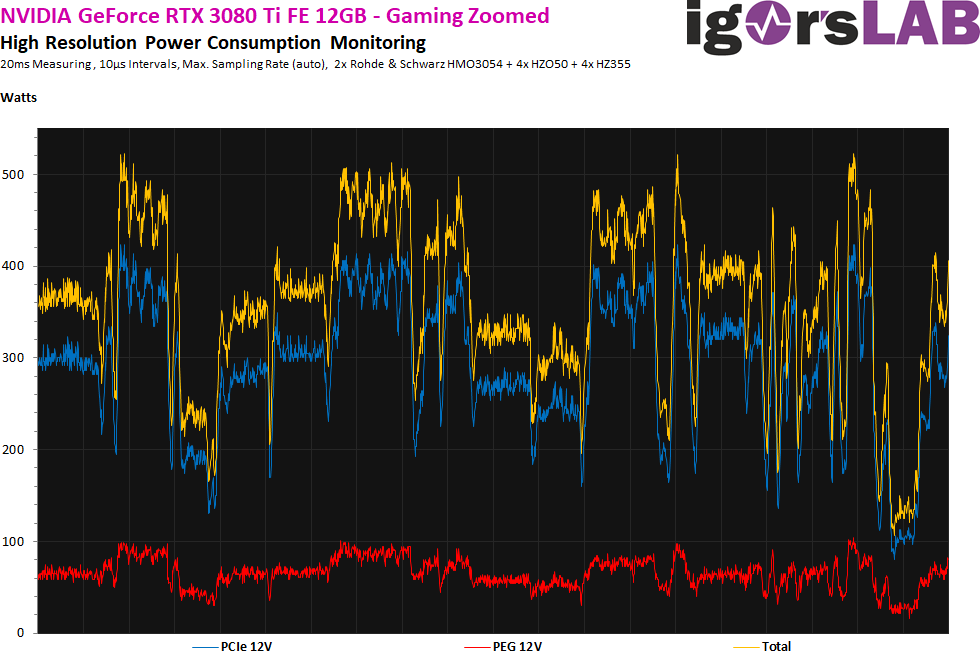
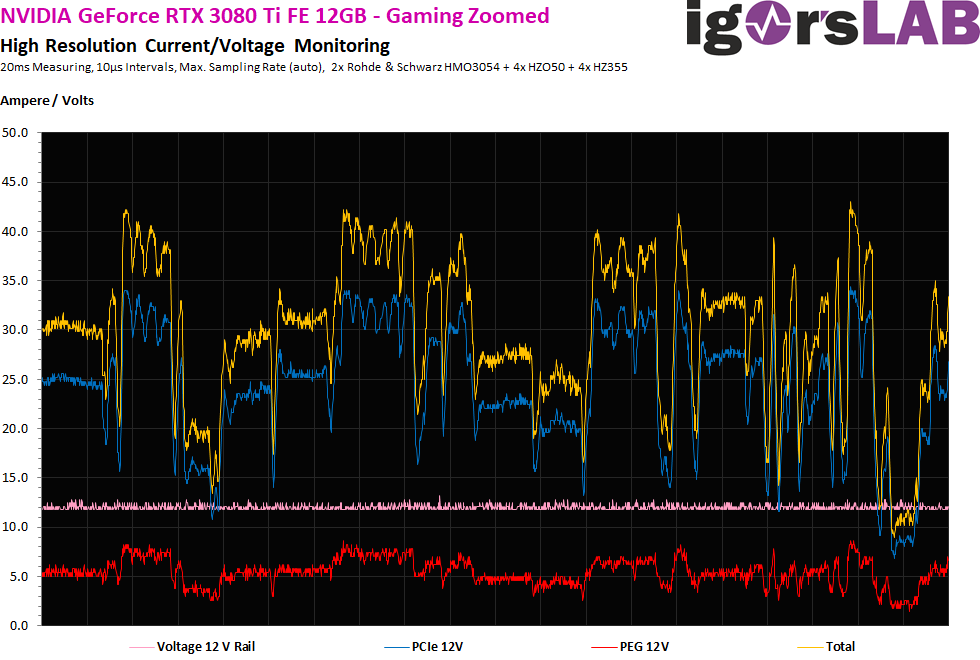
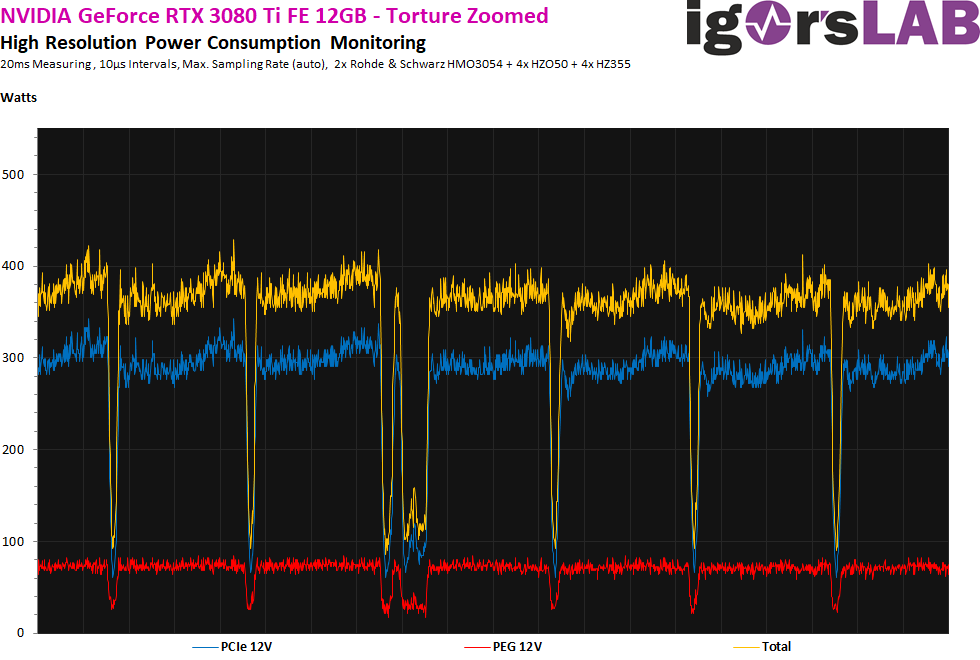



















Kommentieren